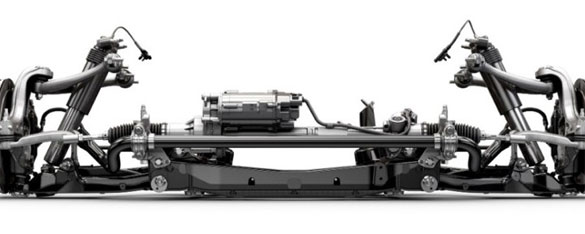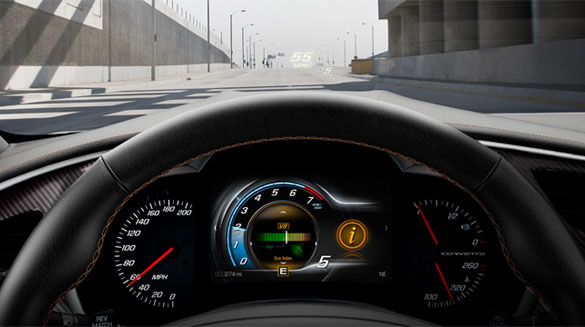Two of Chevrolet’s brains behind the scene say they believe the 2014 Corvette Stingray accomplished all its goals, with nothing left behind on the cutting-room floor.
“I don’t think there was anything,” says Roger Clark, senior manager energy center. “We got virtually everything we needed in the Stingray, and we’re absolutely delighted with the results to be honest.”
Bala Murthy, lead engineer for energy integration, agrees. “I think this vehicle was planned very well from its introduction, and we didn’t really have to go and scrap anything at the last minute.”
The two workers shared their insight into the seventh-generation Corvette with DigitalTrends.com and want enthusiasts to know that the driving experience wasn’t sacrificed to achieve the segment-leading fuel efficiency. If anything, it was enhanced.
“You won’t see any performance differences at all in eco mode,” Murthy says. “When you accelerate the engine automatically gives the power that you need, only in situations like cruising where you’re not demanding that much torque will eco mode become active. When you’re passing and performing other maneuvers that require more from the engine, it’ll be on hand immediately.”
Their mandate to improve fuel economy while trying to match the heritage of the Corvette actually resulted in the use of groundbreaking technology for Chevy’s masterpiece.

That includes the rack Electric Power Steering, a first for Corvette.
“We have a lot of familiarity with the hydraulic system but the challenge was to keep the EPS behaving like and providing the same level of performance as the previous hydraulic power steering system,” Murthy says. “In that regard, we have achieved our target and probably set a benchmark on that level.”
Another key to the Stingray’s stingy gas usage is the Active Fuel Management system, which cuts out half of the engine’s cylinders when it is in Eco mode to provide better fuel economy during highway cruising.
Depending on factors like wind grade, the Corvette can remain in AFM mode at speeds up to 70 miles per hour, Murthy says.
It’s all happening in real time, too. “Absolutely in real time,” Clark says. “It’s calculating how much load is needed and any time you drop below a certain threshold, it knows to enter AFM mode. That switch can occur instantly, and within less than one cylinder event can close those valves off and keep them closed. So it’s constantly checking for that.”
Murthy says the Corvette is all about efficiency – “the efficiency for performance, the efficiency for fuel economy – that’s what this vehicle stands for.”
To accomplish their goal, the Corvette team had to take a systems level approach, he says. “You can tinker with individual components but they all have to work together, even something as small as using LED tail lamps to reduce the 12-volt loads on the system instead of the previous incandescent lamps, the Stingray is all about efficiency.”

Read the full article at www.digitaltrends.com.
Source:
DigitalTrends.com
Related:
[VIDEO] GM’s Consumer Affairs Chief James Bell Discusses the 2014 Corvette Stingray
It’s Official! 2014 Corvette Stingray Gets an EPA Estimated 29 mpg Highway
Official: 2014 Corvette Stingray Cranks Out 460 Horsepower!
-


![[PODCAST] Corvette News and Headlines with CorvetteBlogger on the Corvette Today Podcast [PODCAST] Corvette News and Headlines with CorvetteBlogger on the Corvette Today Podcast](https://www.corvetteblogger.com/images/content/uploads/2024/04/041524_9-218x150.jpg)

